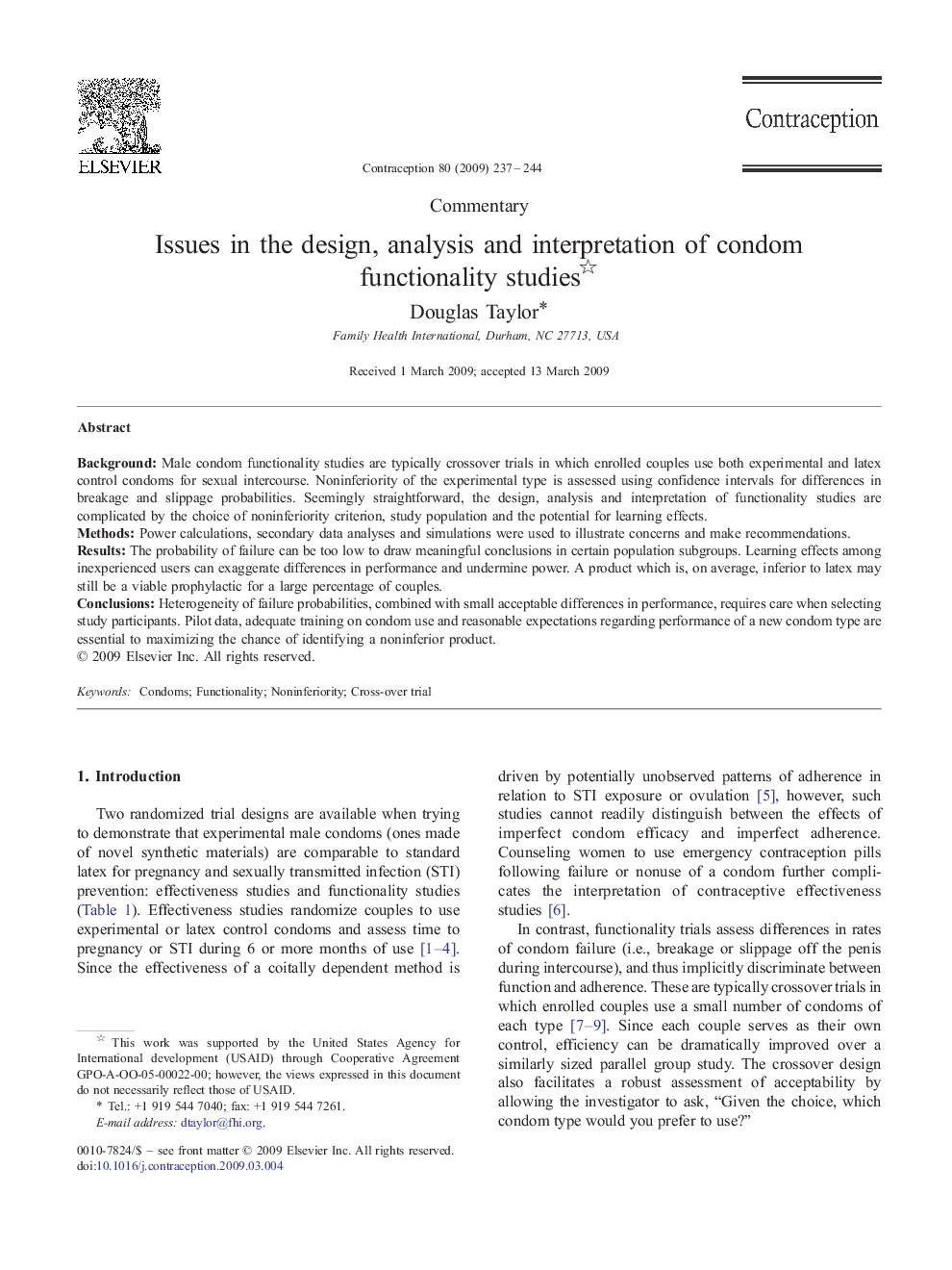| Article ID | Journal | Published Year | Pages | File Type |
|---|---|---|---|---|
| 3915386 | Contraception | 2009 | 8 Pages |
BackgroundMale condom functionality studies are typically crossover trials in which enrolled couples use both experimental and latex control condoms for sexual intercourse. Noninferiority of the experimental type is assessed using confidence intervals for differences in breakage and slippage probabilities. Seemingly straightforward, the design, analysis and interpretation of functionality studies are complicated by the choice of noninferiority criterion, study population and the potential for learning effects.MethodsPower calculations, secondary data analyses and simulations were used to illustrate concerns and make recommendations.ResultsThe probability of failure can be too low to draw meaningful conclusions in certain population subgroups. Learning effects among inexperienced users can exaggerate differences in performance and undermine power. A product which is, on average, inferior to latex may still be a viable prophylactic for a large percentage of couples.ConclusionsHeterogeneity of failure probabilities, combined with small acceptable differences in performance, requires care when selecting study participants. Pilot data, adequate training on condom use and reasonable expectations regarding performance of a new condom type are essential to maximizing the chance of identifying a noninferior product.
